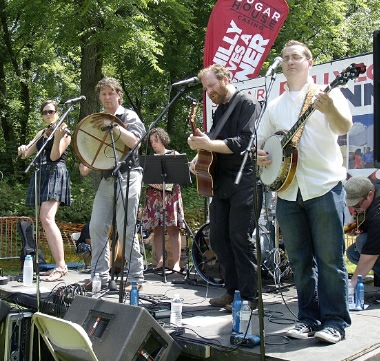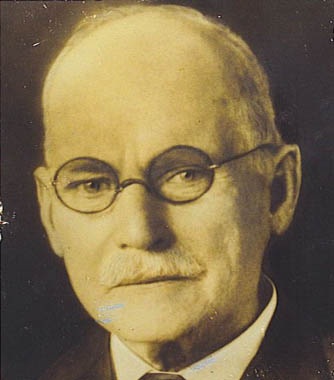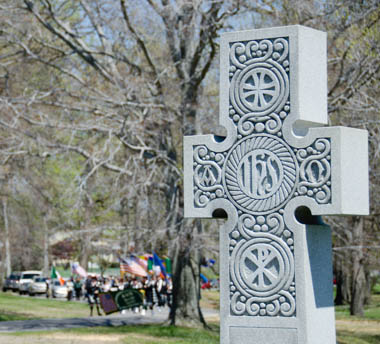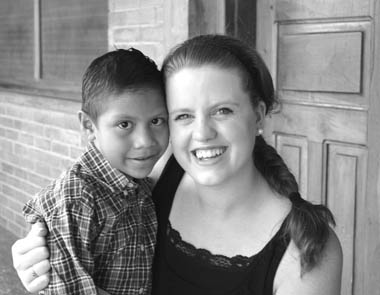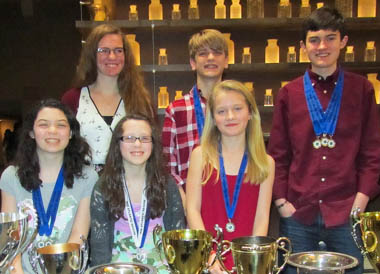
The Sligo-bound six: Bottom, Emily and Livia Safko and Haley Richardson; top, Alanna Griffin, Keegan Loesel, and Alexander Weir
Eight young traditional Irish musicians from the Philadelphia are have qualified to compete in Sligo, Ireland, in August at the Fleadh Cheoil na nEireann—the All-Ireland music championships.
Two world champions from last year’s Fleadh in Derry, fiddler Haley Richardson of Pittsgrove, NJ, who was the under-12 fiddle champion, harpist Emily Safko of Medford, NJ, who placed first in under-12 in harp, will be returning to compete against dozens of other qualifiers from around Ireland and the world August 11-17. They earned their berths at the recent Mid-Atlantic Fleadh in Parsipanny, NJ, sponsored by the Comhaltas Ceoltoiri Eireann, an organization that supports Irish music, dance and culture worldwide.
Richardson placed first in under 12 fiddle, under 12 fiddle slow airs, and under 15 trio with two other solo qualifiers, Keegan Loesel and Alexander Weir. Emily placed 1st in both Under 15 Harp and Harp Slow Airs and her sister, Livia, placed first in under 12 concertina and second in under 12 fiddle slow airs.
Also Sligo-bound are Keegan Loesel, 14, of Kennett Square, who plays uillean pipes and whistles and walked away with a first in Under 15 Whistle slow airs, third in Under 15 Whistle, first in Under 15 uilleann pipes slow airs, second in under 15 uilleannn Pipes, first in under 15 duet with fiddler Alexander Weir, and first in Under 15 Trio with Haley Richardson & Alex Weir; Alexander Weir, 15, of West Chester, who brought home a first in under 15 fiddle slow airs, first in under 15 duet with Keegan Loesel, and first in under 15 trio with Loesel and Richardson; and Alanna Griffin, 18, who also fiddle and concertina, placed second in under 18 concertina.
There will be a fundraising brunch on May 18 at Molly Maguire’s Pub, 202 East Lancaster Avenue, in Downingtown to help defray the traveling costs of the “Sligo-bound Six,” as they’re calling themselves, with a concert and session. Plans are also underway for two other fundraisers, one in Sewell, NJ, and the other in Philadelphia.
Three other local harpists also won places in their divisions—Caroline Bouvier, 8, of Merchantville, NJ, placed third in the under 12s in her first year of competing; Kerry White, 16, of Vorhees, placed third in the 15-18 age group; and Katherine Highet, 27, placed second in the over 18 group.
The three are students of Kathy DeAngelo who, with her husband, Dennis Gormley, was inducted in the Mid-Atlantic Comhaltas division’s Hall of Fame during the Fleadh. DeAngelo and Gormley have worked with the other qualifiers in The Next Generation, a program they started with Chris Brennan-Hagy to foster the skills of youngsters interested in performing Irish music. The group meets every second Sunday of the month at the Irish Center in Philadelphia.
“The Hall of Fame event was amazing,” said DeAngelo this week. “We were so surprised and thrilled to see such a large turnout of friends, family, and supporters from the South Jersey and Philadelphia area.”
When they performed, they made sure it was Philly style. DeAngelo explains:
“We first played a set of reels that we learned from the playing of Ed McDermott [a Leitrim-born Irish traditional musician who settled in New York and later, New Jersey; De Angelo was his student]. Next we had several members of the Next Generation (Alanna Griffin, Mike Glennan, Patrick Glennan) and our friend Bob Glennan join us for a set of jigs composed by Junior Crehan, in a nod to our late friend Liz Crehan Anderson who was a founding member of the Delaware Valley Comhaltas Ceoltoiri Eirann.
“For our third number, we had more Next Gen musicians (Kerry White and Alex Weir) join us and we acknowledged Kevin McGillian in the audience, another Hall of Famer from the Philadelphia area. We launched into a set of reels we taught the youngsters that we learned from Kevin, and which they performed on the “Ceili Drive” CD by irishphiladelphia.com, the Travers and Tinker’s Daughter set. It was awesome,” she said.
[flickr_set id=”72157644524844643″]

